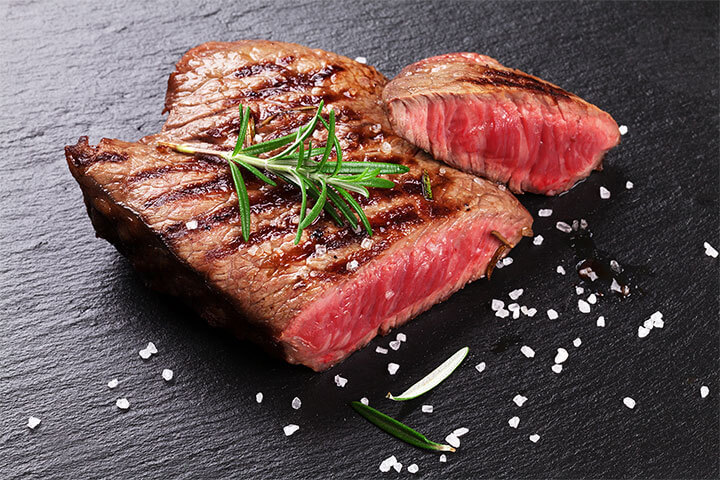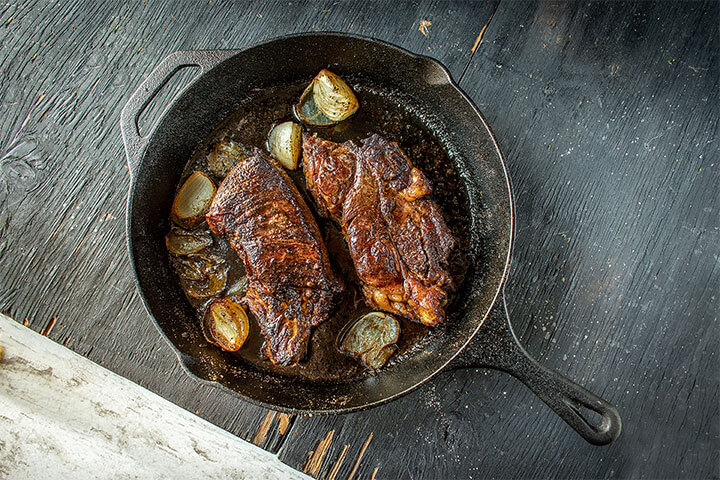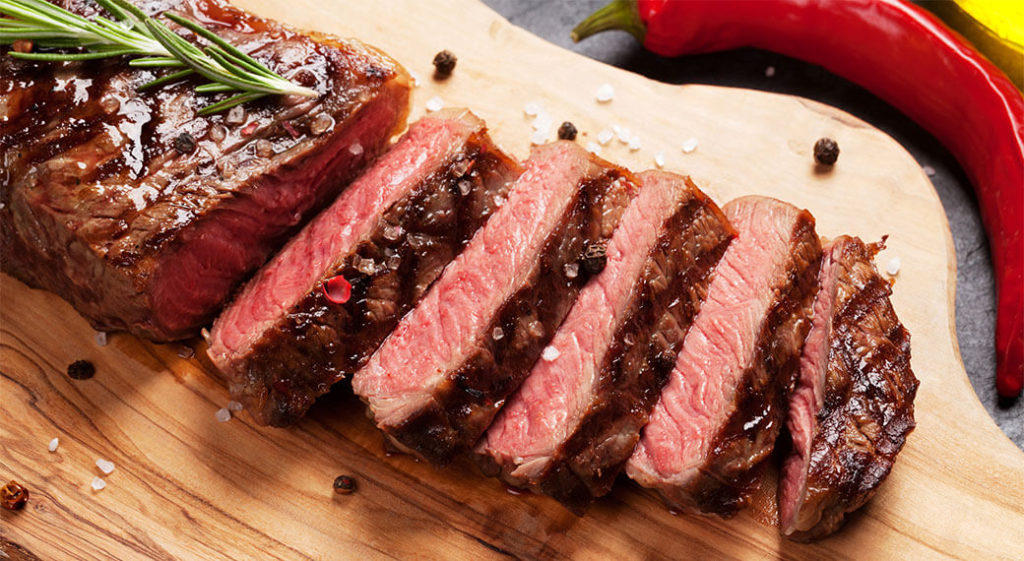For this BoH Debate, we’ll look at not one, but two commonly contested rumors about steak. First, we will explain exactly what that red stuff is seeping out of steak. Then, we will address the myth that searing steak locks in juices.
Is That Blood in My Steak?

If you see red liquid seeping out of steak is not actually blood but rather mainly a mixture of water and a protein called myoglobin. Myoglobin is responsible for the reddish color of meat and is particularly abundant in muscle tissues. When steak is prepared, myoglobin undergoes changes in color and texture, leading to the characteristic brown color of cooked meat.
During the cooking process, as the meat reaches higher temperatures, myoglobin denatures and releases water, contributing to the juiciness of the steak. Contrary to popular belief, modern meat processing methods involve bleeding out the meat during cattle slaughter, so what remains in the muscle tissue is not blood in the traditional sense.
In summary, the liquid you see in your steak is mostly a combination of water and myoglobin and it is a natural part of the cooking process.
Another Juicy Rumor About Steak

The idea that searing steak before cooking “locks in” juices is another common culinary myth. Searing does not create a literal seal that locks in moisture. The primary purpose of searing is to develop flavor through the Maillard reaction—a chemical reaction between amino acids and reducing sugars that gives browned foods their characteristic flavor and color.
Searing involves quickly cooking the surface of the meat at high temperatures. While it does contribute to the overall flavor and appearance of the meat, it doesn’t prevent the escape of juices during the cooking process. Although juices are still released while the meat is being seared, the Maillard reaction can enhance the overall eating experience by creating a flavorful crust on the surface of the meat.
To retain the moisture, it’s more important to focus on factors like proper cooking temperature and letting the meat rest after cooking. Cooking at the right temperature helps to minimize moisture loss, and allowing the steak to rest after cooking gives the juices time to redistribute throughout the meat.
In summary, while searing adds flavor and texture to the steak, it doesn’t “seal in” juices. Other factors, such as cooking temperature and resting time, play a more significant role in retaining moisture.
Moo-ving On
The next time you present a perfectly cooked steak, your guests can relish its rich flavors, while you savor the science behind the culinary masterpiece on their plate. What debates do you hear in the BoH that we can address? Let us know in the comment section!



